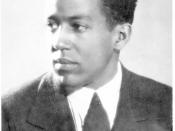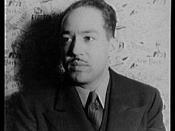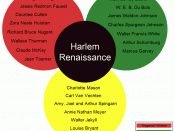The Harlem Renaissance Period (1919-1940) included many outstanding features and writers which made for a wonderful cache of literary works by African American writers. There was an unprecidented variety and scope of publications by African Americans which brought about a new sense of purpose, confidence, and achievement unusual to many black artists due to thier troubled history. This led to thier irresistable impulse to create boldly expressive art of high quality. The 1920's saw the first significant amount of publishing of works by black artists since the turn of the century. Migration to the north seemed a necessity due to the more and more intolerable hiring conditions for blacks in the south. Industrial expansion and jobs left open by whites now serving in WWI saw many blacks moving into the seriously overbuilt Harlem which was origionally built for middle-class and upper-middle-class whites. It was soon labled the "Negro capital of the world" by James Weldon Johnson, a prominent writer and civil rights leader of the times, and thus soon became the headquarters of such powerful groups as the NAACP, the National Urban League, and Marcus Garvey's Universal Negro Improvement Association.
During this period of migration, several magazines and newspapers strived toward a kind of "coming of age" for the black culture. The early 1920's also saw a breakthrough for African Americans on the stage by finally having plays that showed the complex humanity of blacks. James Weldon Johnson is much quoted in relation to the uprising of the negro culture. He wrote that what the new black artists needed to do was to find "a form expressing the imagery, the idioms, the peculiar turns of thought, and the distinctive humor and pathos" of the African American culture. There were many writers that dominated the movement including Arna Bontemps, Wallace Thurman,


